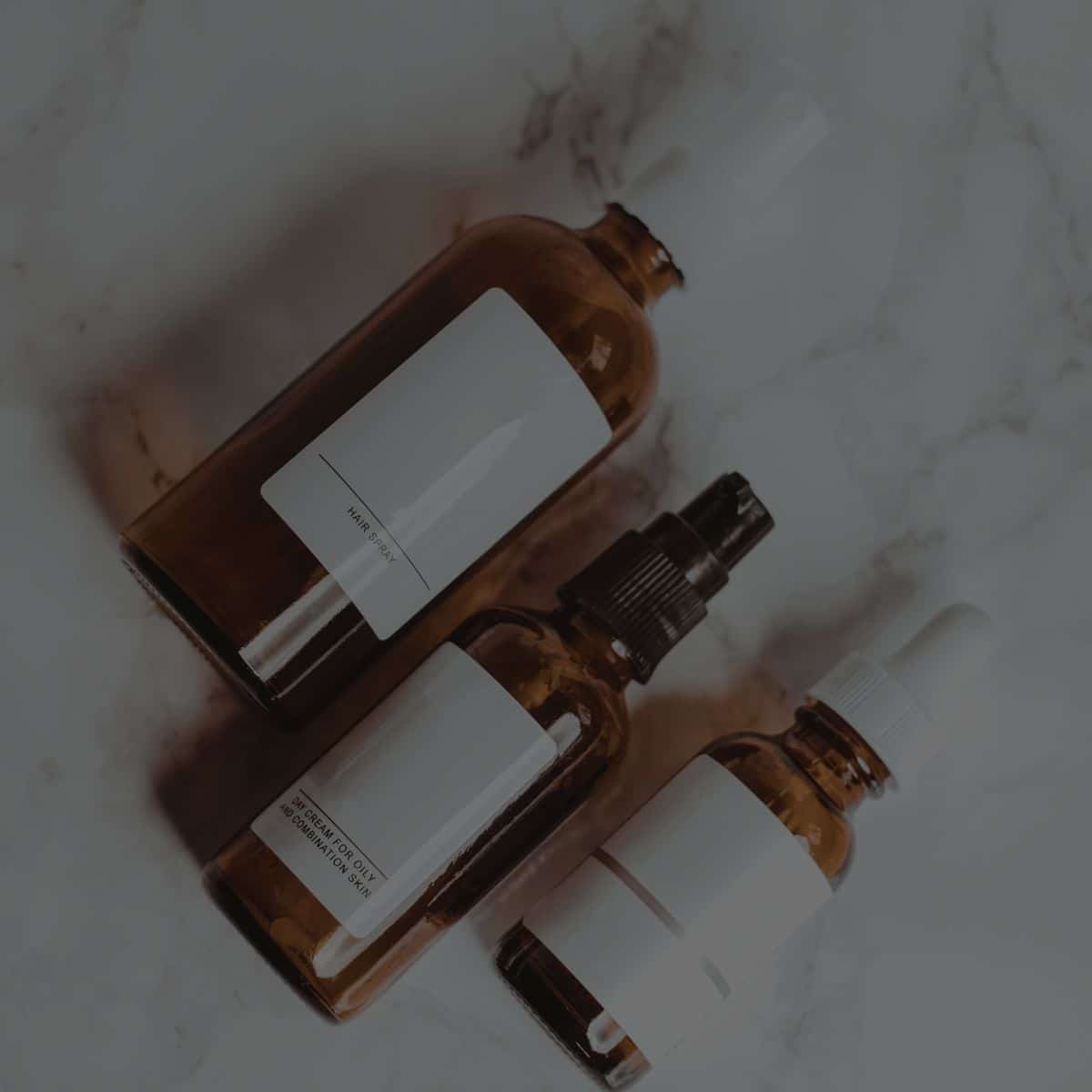
This site may earn commission from affiliate links. See policies and disclaimers.
Jump to:
In pursuing clear, smooth skin, the key lies in crafting a skincare routine that works effectively and aligns with your needs and preferences. With the many available products, it's easy to feel overwhelmed, but creating a personalized skincare regimen can be both straightforward and rewarding.
In this article, we'll walk through crafting a skincare routine that elevates your natural glow while keeping it simple and using minimal ingredients.
Understanding Your Skin's Unique Needs
Before diving into the specifics of your skincare routine, it's essential to understand your skin's unique characteristics. This knowledge forms the foundation upon which you'll build an effective routine. Start by identifying your skin type:
Identifying Your Skin Type:
Skin type refers to the amount of sebum produced by your sebaceous glands.
Oily: If your skin tends to be shiny and prone to breakouts.
Dry: If your skin feels tight, flaky, and lacks moisture.
Combination: If you have a mix of oily and dry areas.
Normal: If your skin feels balanced and comfortable.
Skin conditions:
Technically speaking, any skin type is susceptible to these skin conditions.
Sensitive: If your skin reacts to products with redness, itching, or irritation.
Dehydrated: If your skin feels dry, tight, and lacks moisture but still shows signs of oiliness and congestion, it may be dehydrated. This condition concerns a lack of water, not oil, and can affect any skin type.
Acne-Prone: Acne-prone skin refers to a skin type that is particularly susceptible to developing acne, a common skin condition characterized by the presence of pimples, blackheads, whiteheads, and sometimes even more profound, painful nodules. Usually, acne-prone skin is associated with oily and sensitive skin.
Read this: Master your skin type in 3 simple steps.
Assessing Your Skin Goals:
When selecting skincare products, it's essential to consider your specific goals. Are you targeting acne, fine lines, or simply looking to maintain a healthy complexion? Knowing your skincare goals will guide you in choosing the most appropriate products and ingredients for your routine.
Crafting Your Personalized Skincare Routine
Cleansing – A Gentle Start:
Begin with a gentle cleanser suited to your skin type. Cleansing removes dirt, makeup, and impurities, setting the stage for effective skincare. My favorite is this hydrating cleanser from Cerave. It's suitable for all skin types, gentle, and fragrance-free.
Double cleansing at night:
Double cleansing, a cornerstone of effective skincare, involves a two-step cleansing process that ensures your skin is thoroughly clean and ready to absorb the benefits of subsequent skincare products. The technique originated in Korean skincare routines and has gained popularity worldwide for its ability to cleanse and rejuvenate the skin deeply.
The first step typically involves using an oil-based cleanser to remove makeup, sunscreen, and excess oil. This initial wash breaks down impurities that can accumulate on your skin's surface throughout the day.
My current favorite cleansing balm is only $10, which smells like fruity pebbles. I apply this product to my face and massage it for approximately two minutes. During this time, I do a quick lymphatic drainage massage as well. Kill two birds with one stone, if you will.
The second step employs a water-based cleanser to remove the remaining residue and provide a deeper cleanse. By engaging in double cleansing, you're removing dirt and pollutants and setting the stage for your skincare products to penetrate more effectively, enhancing their overall impact.
This method is necessary in urban environments, for sunscreen removal, or after wearing makeup, as it helps maintain the health and radiance of your skin by preventing congestion and allowing it to breathe freely.
Incorporating double cleansing into your skincare routine can elevate your self-care ritual, leaving your skin refreshed, revitalized, and ready to absorb the goodness of your chosen skincare.
Exfoliation – Banishing Dead Skin Cells:
Exfoliating your skin at least once a month is my recommendation to get rid of dead skin cells. While weekly exfoliation is suggested, many skincare products already have exfoliating properties. Additionally, a washcloth can manually exfoliate your skin, so you may not need to do it as often as you think.
A good option is chemical exfoliants with glycolic or salicylic acid. If you have sensitive skin, a PHA exfoliant may be the way to go because they are typically not as irritating. Right now, I prefer using spicules to exfoliate my skin manually.
Marine sponges called spicules possess anti-bacterial and anti-inflammatory properties and are also minimally abrasive. These spicules can penetrate deep into the skin and stimulate collagen production. This process is often compared to micro-needling.
Hydration – Quenching Your Skin's Thirst:
Hydration is vital, regardless of your skin type. A hydrating serum or essence containing hyaluronic acid can help your skin retain moisture. My favorite hyaluronic acid serum is this one.
Treatment – Targeting Specific Concerns:
If you have concerns like acne, aging, or hyperpigmentation, incorporate targeted treatments. My #1 recommendation would be to try Adapalene, an OTC retinoid on the gentler side that relieves many skin issues.
Read This: The power of adapalene
Moisturization – Sealing in Goodness:
Lock in hydration with a moisturizer appropriate for your skin type—even oily skin benefits from lightweight, oil-free moisturizers.
Sun Protection – Shielding Your Skin:
Never skip sunscreen, even on cloudy days. Opt for a broad-spectrum sunscreen with at least SPF 50 to protect against harmful UV rays. I prefer Korean sunscreens because they are more comprehensive than American ones.
Read this: My daily sunscreen routine.
Prioritizing Minimal Ingredients and Zero Fragrance
Ingredient Consciousness:
Choosing products with minimal ingredients reduces the risk of potential irritants. Over the last few years, we've heard many buzzwords like "clean ingredients" and "clean girl aesthetic." While I agree with parts of that philosophy, some issues arise with products deemed as "clean."
The "clean" movement has significantly impacted our perception of preservatives. Due to constant air, water, and human contact exposure, skin care products require preservatives to prevent bacteria growth.
Furthermore, skincare products require some preservatives to prevent them from having an even shorter shelf life than they currently do. To help with this situation, many companies replace traditional preservatives with ingredients like methylisothiazolinone, known to be an irritant.
Moreover, some "clean ingredient" products receive that label because they use plant botanicals and essential oils, which also irritate a large population.
So, ingredient consciousness involves carefully examining the components of your skin care products and ensuring they align with your skin's needs. Selecting products with minimal, well-chosen ingredients reduces the risk of potential irritations and promotes a healthier, more radiant complexion.
Potential Irritants to Look For:
While the skincare world offers an array of botanicals and compounds, not all ingredients are universally well-tolerated. Essential oils, often used for their aromatic qualities, can be potential irritants for many individuals, causing redness, itching, or allergic reactions.
Plant-derived botanicals, while natural, can also harbor allergenic compounds that lead to sensitivities. It's essential to watch for these ingredients, especially if you have sensitive or easily reactive skin.
Essential Oils: Essential oils like citrus, lavender, and peppermint may sensitize some individuals. While they can offer benefits in some instances, they can also trigger adverse reactions in others. Opt for fragrance-free products to avoid potential irritations.
Plant Botanicals: Although plant-based ingredients are healing, it is essential to exercise caution. Botanical extracts can trigger allergies or irritations in individuals with sensitive skin.
More importantly, these adverse reactions are more likely to go unnoticed as the rashes might happen randomly. It is advisable to patch-test new products that contain plant-derived ingredients before fully incorporating them into your skincare routine.
The Power of Minimalist Formulations:
Seeking products with fewer ingredients can significantly reduce the likelihood of skin reactions. Minimalist formulations often focus on core components that address specific skincare concerns without introducing unnecessary complexities.
Look for products that prioritize active ingredients beneficial to your skin types, such as hyaluronic acid for hydration, niacinamide for brightening, and ceramides for barrier support.
Fragrance-Free Benefits:
Fragrance can cause sensitivity and irritation, even for those without sensitive skin. Opting for fragrance-free products minimizes the risk of adverse reactions.
Patch Testing:
Always perform a patch test on a small skin area when introducing new products to ensure compatibility and prevent potential allergic reactions.
Summary
Crafting a skincare routine tailored to your skin's unique needs is a powerful way to enhance your natural beauty and boost your confidence. Remember, simplicity is key – focus on essential steps and minimal ingredients for optimal results.
By incorporating products that align with your skin type, goals, and preferences, you're on your way to nurturing your skin and experiencing the glow from within. Elevate your skincare journey with a personalized routine that makes you feel radiant and confident daily.
The content provided on this website is for informational and educational purposes only. It is not intended to be a substitute for professional advice, diagnosis, or treatment. Always seek the advice of a qualified healthcare professional with any questions you may have regarding a medical condition. See policies and disclosures.





Leave a Reply